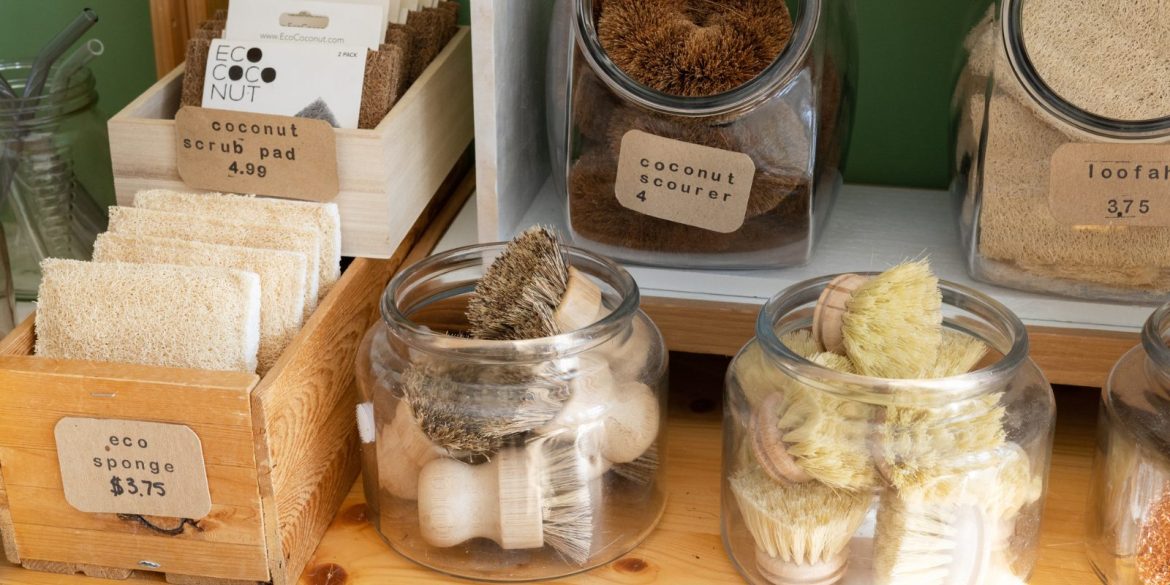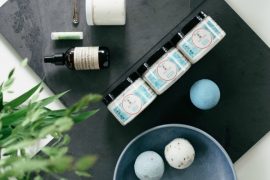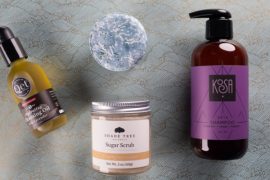By Shelby Deering | Photography by Shanna Wolf
Being eco-friendly at home serves a dual purpose — to be kinder to the planet, of course, but also to be kinder to your body and health. While we may use products that we believe to be perfectly fine overall, there are often even better, healthier alternatives.
Sasha Stone, owner and founder of Green Life Trading Co. (and BRAVA 2021 Woman to Watch), offers her top tips for replacing not-so-green items for ones that the earth, and your family’s wellbeing, will love.
Swap Microfiber Cloths for Reusable Alternatives
Washable and reusable microfiber cloths are pretty great, right? Well, according to Stone, these cloths are made up of super-small strands of polyester or another synthetic fiber that release microplastics — tiny fragments of plastic that experts increasingly believe impact the environment and health — into the water system. Instead, Stone recom- mends using plant-based, reusable, washable products, like cotton and plant-based Swedish dishcloths and eco sponges.
Swap Tea Bags for Loose-Leaf Tea
As a tea drinker, I was surprised to learn from Stone that almost all tea bags, even the paper ones, contain plastic “to keep them from bursting open or to heat-seal the bag together,” adding that this is unsettling because tea bags are heated to boiling temperatures before we consume the brew. Essentially, each cup of tea can release up to a billion microplastics, Stone says.
“Luckily, there’s a simple alternative — loose-leaf tea,” she says. “All you need is a loose-leaf tea steeper made of safe-to-consume materials like stainless steel, silicone, cotton or even bamboo.”
Swap Dryer Sheets for Dryer Balls
Stone explains that most dryer sheets are made of polyester coated in fragrances and softeners that melt onto clothes as the dryer heats. Over time, this coating makes items like towels less absorbent and coats the inside of your dryer, which could potentially clog the machine. “They are also single use and end up in the landfill,” she adds.
Instead, she suggests using dryer balls, a swap that can save you money. Typically made up of wool, hemp or alpaca fibers, the balls absorb water, which can help the clothes dry faster. (The balls separate clothing as they bounce around the dryer, which also reduces drying time.) Then once the items are dry, the moisture releases back into the load, steaming the fabrics and ironing out wrinkles. The swap means you won’t have to buy one-use dryer sheets anymore and the quicker drying can reduce energy costs.




